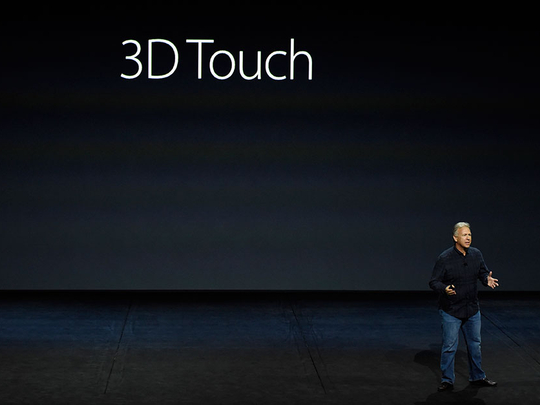
Singapore, Taipei and Tokyo: Haptics-adding tactile feedback to an interface — is nothing new, but Apple’s embrace of it is likely to prove a boon for many companies, including those developing the technology and suppliers.
Companies
Haptic-related technology companies have been working on the field for 15 years or more. Others are more recent. They include:
* NextInput Inc: Atlanta, Georgia spin-off from Georgia Tech, maker of force-sensitive technology. Investors include Intel Corp and Takata Corp.
* Immersion Corp: Company has among its customers mobile handset makers Samsung Electronics, LG Electronics Inc, Xiaomi, Huawei Technologies, Meizu Technology Co and Gionee.
* Synaptics Inc: Senseg, Finland-based company, whose investors include NXP Semiconductors.
* Novasentis Inc: Company’s investors include Samsung Ventures.
* Ultrahaptics: This is a UK start-up and spin-off from Bristol University, exploring using inaudible sound waves to create visible shapes and invisible contours in the air, a sort of mid-air haptics.
* Redux Labs: This is a UK-based company using sonic waves on a surface to create audio or haptic effects.
* Zrro: A crowd-funded start-up developing technology that would enable touch screens to sense fingers up to 3cm away, allowing users to control devices without touching them.
iPhone suppliers
Taiwan’s TPK Holding Co Ltd is a major supplier of Apple’s Force Touch technology, according to supply chain sources. It provides touch sensors to makers of liquid crystal displays, which are installed inside the phone.
* Vibration motors are then installed during the final stage of product assembly. These motors are crucial in detecting signals from pressure sensors, which activate when a finger touches the screen. According to one industry source, Japan’s Nidec Corp is likely to be the sole supplier of the motors, at least initially.
* Chips and components rest atop flexible printed circuit boards inside the phone. This industry should benefit from the introduction of Force Touch as it requires a new type of circuit board that increases its value per iPhone box, according to the industry. Taiwan’s Zhen Ding Technology Holding Ltd and Japan’s Nippon Mektron Ltd, an unlisted subsidiary of NOK Corp, will supply the majority of the flexible printed circuit boards for the new iPhones, sources said.












